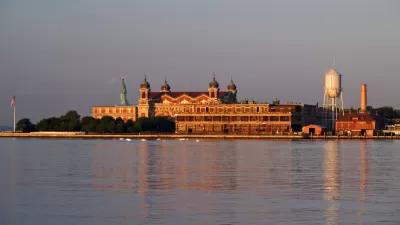Plans for temporary facilities designed to house between 25,000 to 45,000 people have been revealed by Time Magazine. Sites in Alabama, Arizona, California,

Philip Elliott and W.J. Hennigan report:
The U.S. Navy is preparing plans to construct sprawling detention centers for tens of thousands of immigrants on remote bases in California, Alabama and Arizona, escalating the military’s task in implementing President Donald Trump’s “zero tolerance” policy for people caught crossing the Southern border, according to a copy of a draft memo obtained by TIME.
Phyllis L. Bayer, the assistant secretary of the Navy for energy, installations and environment for the Navy Secretary's approval. The memo anticipates a request from the Department of Homeland Security.
The memo includes details on the exact locations of the proposed detention centers. Detention centers would hold 25,000 immigrants at abandoned airfields "just outside the Florida panhandle near Mobile, Alabama, at Navy Outlying Field Wolf in Orange Beach, Alabama, and nearby Navy Outlying Field Silverhill."
"The memo also proposes a camp for as many as 47,000 people at former Naval Weapons Station Concord, near San Francisco; and another facility that could house as many as 47,000 people at Camp Pendleton, the Marines’ largest training facility located along the Southern California coast," according to the article. "The planning memo proposes further study of housing an undetermined number of migrants at the Marine Corps Air Station near Yuma, Arizona."
The plan expects to pay $233 million to build and operate the "temporary" facilities for six months. There are a few more key reported facts included in the article, including that these new facilities will be far from the first occasion for the United States to use military bases to house immigrants. "In 2014, the Obama Administration placed around 7,700 migrant children on bases in Texas, California and Oklahoma. The temporary shelters were shuttered after four months."
For commentary on the draft memo, see an article by Ed Kilgore that briefly discusses the potential reasons for building these facilities on military sites.
FULL STORY: Exclusive: Navy Document Shows Plan to Erect 'Austere' Detention Camps

Maui's Vacation Rental Debate Turns Ugly
Verbal attacks, misinformation campaigns and fistfights plague a high-stakes debate to convert thousands of vacation rentals into long-term housing.

Planetizen Federal Action Tracker
A weekly monitor of how Trump’s orders and actions are impacting planners and planning in America.

Chicago’s Ghost Rails
Just beneath the surface of the modern city lie the remnants of its expansive early 20th-century streetcar system.

Bend, Oregon Zoning Reforms Prioritize Small-Scale Housing
The city altered its zoning code to allow multi-family housing and eliminated parking mandates citywide.

Amtrak Cutting Jobs, Funding to High-Speed Rail
The agency plans to cut 10 percent of its workforce and has confirmed it will not fund new high-speed rail projects.

LA Denies Basic Services to Unhoused Residents
The city has repeatedly failed to respond to requests for trash pickup at encampment sites, and eliminated a program that provided mobile showers and toilets.
Urban Design for Planners 1: Software Tools
This six-course series explores essential urban design concepts using open source software and equips planners with the tools they need to participate fully in the urban design process.
Planning for Universal Design
Learn the tools for implementing Universal Design in planning regulations.
planning NEXT
Appalachian Highlands Housing Partners
Mpact (founded as Rail~Volution)
City of Camden Redevelopment Agency
City of Astoria
City of Portland
City of Laramie





























